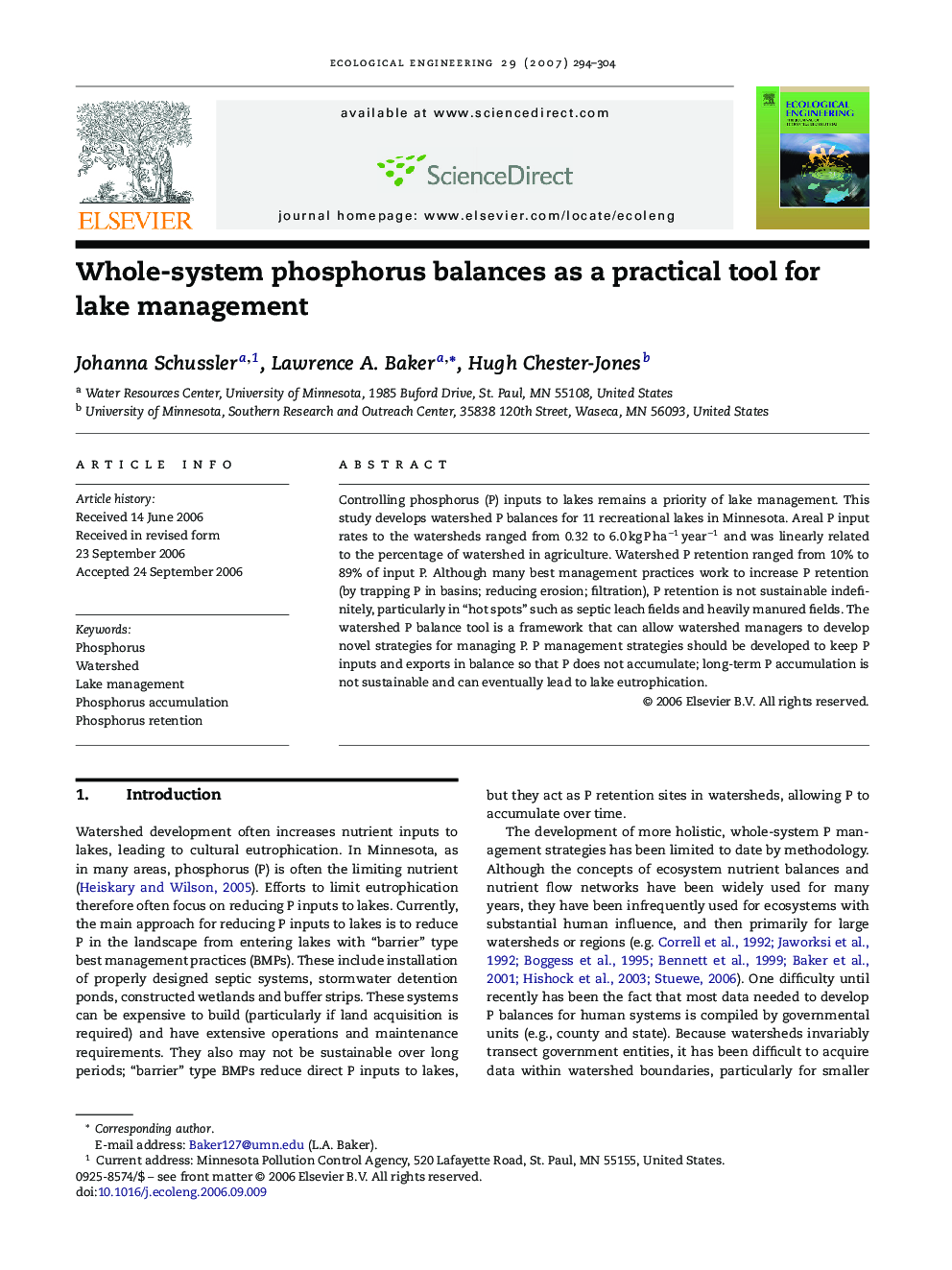| Article ID | Journal | Published Year | Pages | File Type |
|---|---|---|---|---|
| 4391209 | Ecological Engineering | 2007 | 11 Pages |
Controlling phosphorus (P) inputs to lakes remains a priority of lake management. This study develops watershed P balances for 11 recreational lakes in Minnesota. Areal P input rates to the watersheds ranged from 0.32 to 6.0 kg P ha−1 year−1 and was linearly related to the percentage of watershed in agriculture. Watershed P retention ranged from 10% to 89% of input P. Although many best management practices work to increase P retention (by trapping P in basins; reducing erosion; filtration), P retention is not sustainable indefinitely, particularly in “hot spots” such as septic leach fields and heavily manured fields. The watershed P balance tool is a framework that can allow watershed managers to develop novel strategies for managing P. P management strategies should be developed to keep P inputs and exports in balance so that P does not accumulate; long-term P accumulation is not sustainable and can eventually lead to lake eutrophication.
